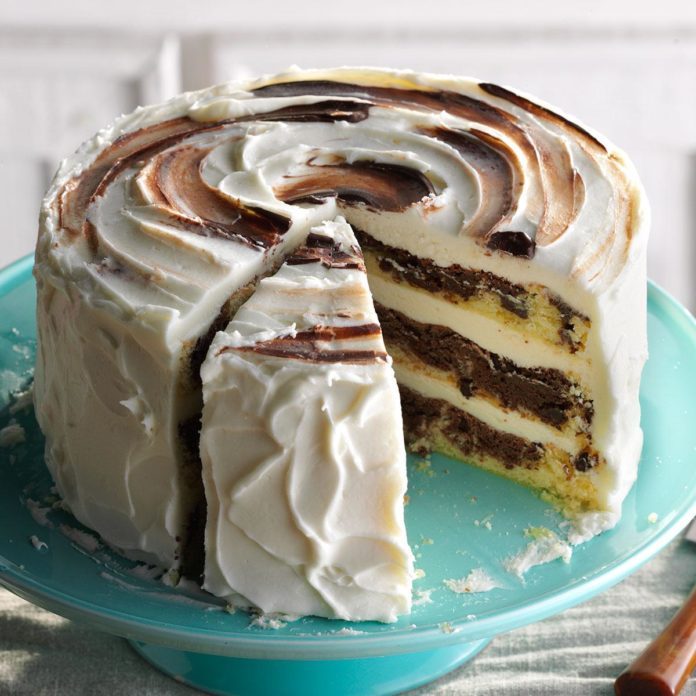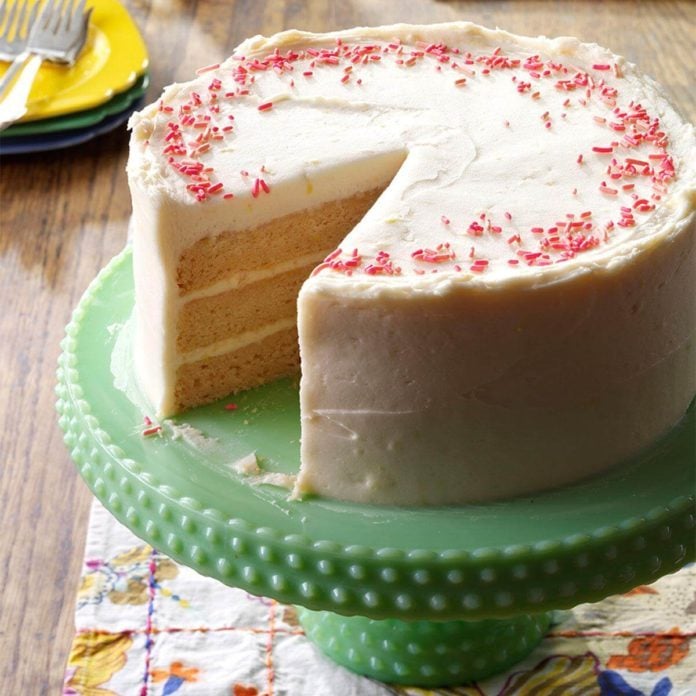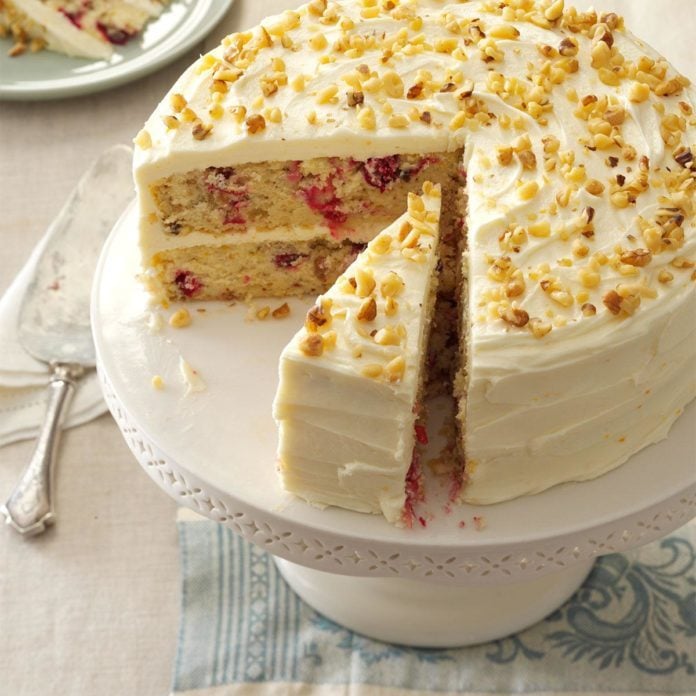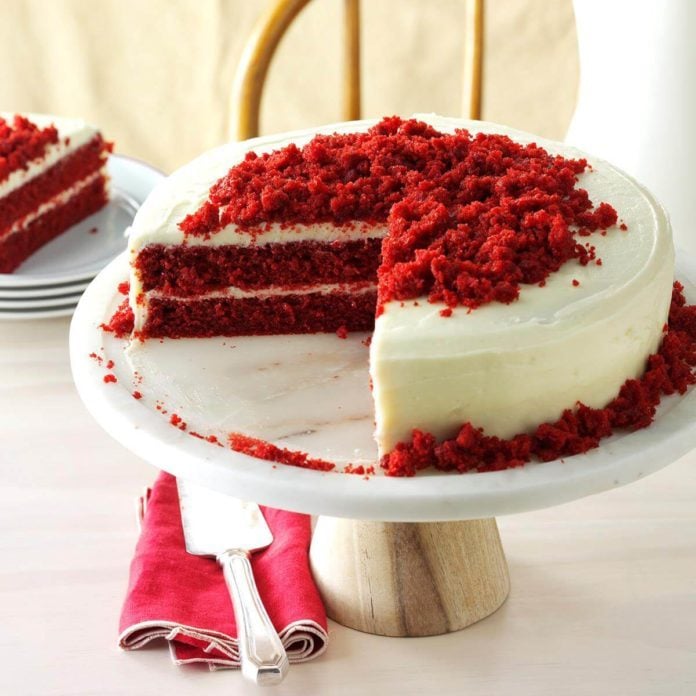Look at a bowl of curdled cake batter—and it’s hard to miss the pesky blobs that emerge from your once-smooth mixture. What causes this batter breakdown? Your eggs or milk are too cold!
The blobs in the batter are pieces of butter. This butter breaks out of the batter when the fat gets too cold and seizes.
It’s important that all fat and dairy, including butter and eggs, should be brought to room temperature before you use them in batter. This allows your batter to become a smooth emulsion of fat (from butter and egg yolk) encasing water (from egg white), all while trapping air. If one ingredient is too cold, smooth batter suddenly changes to pockets of fat floating in water…not so delicious.
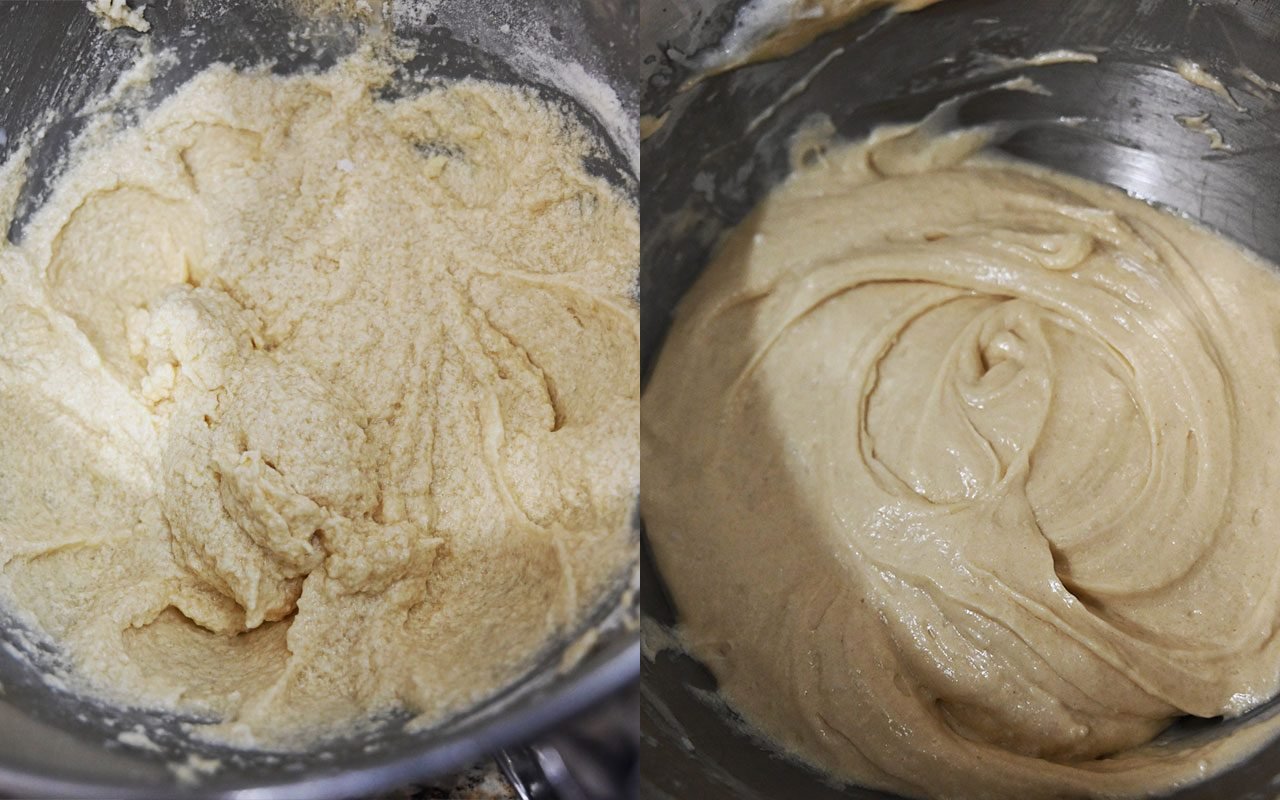
Does Curdled Batter Affect the Final Cake?
The good news is, while curdled batter is certainly a cake-baking problem, it can still be baked and produce a cake. But the crumb or texture of that cake will be uneven because the fat isn’t dispersed evenly throughout the batter. You might find pockets of cake that seem dry or others that seem slightly gummy. Is this ideal? No. Is it the end of the world? Also, no!
Beyond the uneven texture, cakes or cupcakes baked with curdled batter may also have less rise. When batter is properly emulsified, it can effectively trap air in the fat. This air goes into the oven and results in a fluffy texture. But, if that emulsification breaks, poof!, there goes all the trapped air.
I forced curdled the batter in this cake by using very cold eggs. You can see the uneven texture of the cake and even chunks that fell off when I removed it from the pan because they were surrounded by high moisture areas.

In this three-tier cake, the top and bottom layer are a proper batter and the middle is a curdled batter. The middle layer crumbles when cut and had less rise than the other two layers.
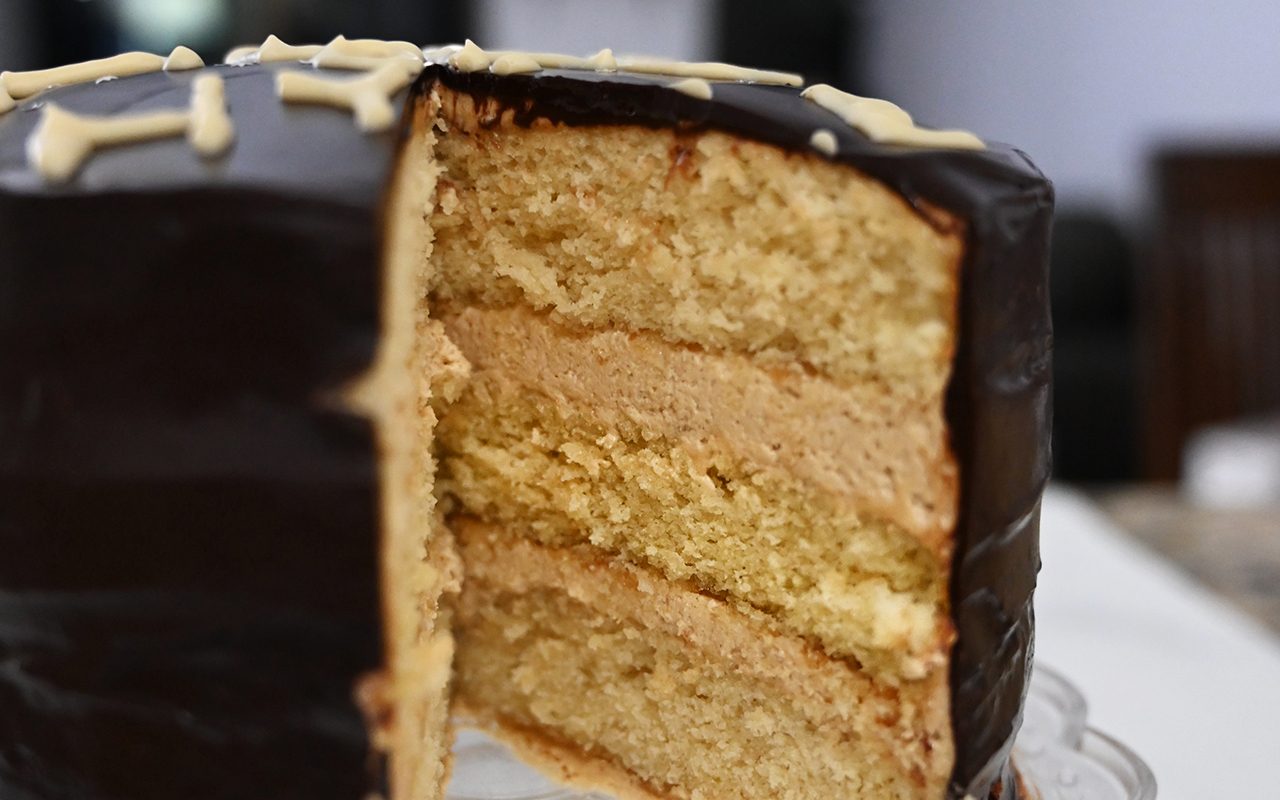
How to Avoid Curdled Batter
The best way to avoid a curdled batter is to let all of your ingredients come to room temperature first. Setting them out on the counter for about an hour is optimal.
If you need a quicker solution, you can set out the butter, eggs and dairy, then measure out all the other cake ingredients, prep your pans and preheat the oven. By the time that is all done, zap the dairy and butter in the microwave on a low power level (I use 30%) until they are room temperature. You can also use a this trick to soften butter quickly. Then, plop the eggs into a glass of warm water.
“When adding eggs,” says James Schend, our Deputy Editor of Food, “it’s best to lightly beat them first and slowly add them to the butter-sugar mixture as it’s whipping. Things usually break when liquid is added to quickly or too much is added.”
You’ll mix up a smooth, luxurious and perfectly emulsified batter!
Can I Fix Curdled Batter?
James says yes! He recommends stirring in a tablespoon or two of flour to the mixture, just until the batter is emulsified once again. Stirring any longer will cause excess gluten to form, which will toughen up your cake.
Now you can approach any batter as a fearless baker! Next, perfect your technique with our cake-baking guide.
Find a Gorgeous Layer Cake to Bake
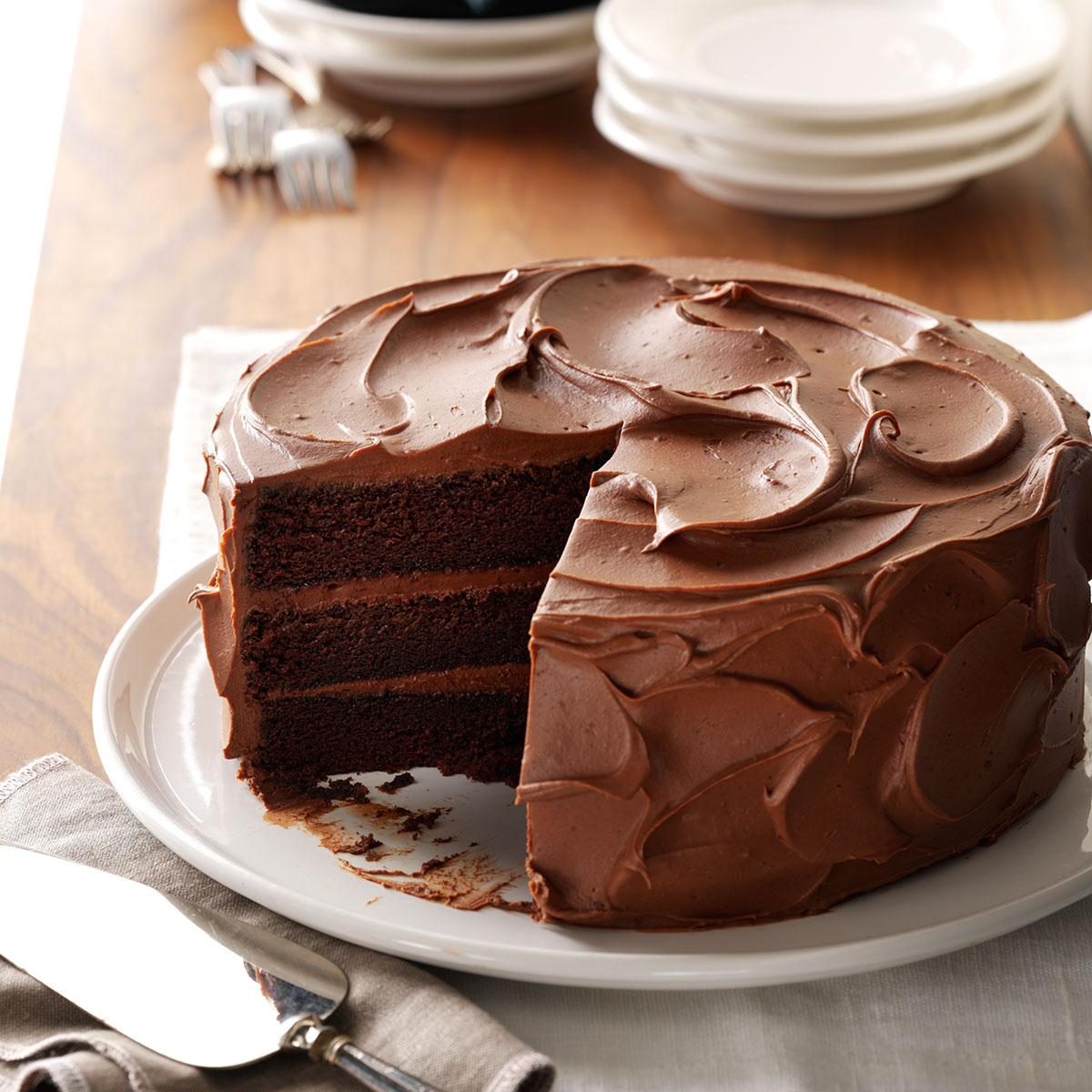
Years ago, I drove 4-1/2 hours to a cake contest, holding my entry on my lap the whole way. But it paid off. One bite and you'll see why this velvety beauty was named the best chocolate cake recipe won first prize. —Sandra Johnson, Tioga, Pennsylvania
Get Recipe
This recipe truly lives up to its name. The pecan-dotted cake is stacked in three layers, and made-from-scratch frosting is the crowning touch.—Karen R. Jones, Claypool, Indiana
Get Recipe
If you want a
St. Patrick's Day dessert that will take the cake, look no further! The rich chocolate cake is incredibly moist and has a nice malt flavor that's perfectly complemented by the Irish cream frosting. —Jennifer Wayland, Morris Plains, New Jersey
In our family no one thinks it’s Christmas without this Red Velvet Cake recipe. I baked the first one for Christmas in 1963 when I found the recipe in the newspaper and my Mother kept the tradition going into the ’80s. It’s different than other Red Velvet Cakes I’ve tasted over the years, since this one tastes only mildly chocolate and the icing is as light as snow. —Kathryn H. Davison, Charlotte, North Carolina
Get Recipe
I found this recipe back in the late '80s and knew it was a special cake. The caramel icing can be a little tricky because you have to work quickly, but it's so worth it! —Mariann James, Ferguson, Missouri
Get Recipe
Most cake recipes feed a crowd. So we came up with this elegant little cake that serves six. That's enough for two…with just the right amount of leftovers! —Taste of Home Test Kitchen
Get Recipe
My sister gave me the recipe for this beautiful cake years ago. The thin layer of frosting spread on the outside gives it a chic modern look. —Lynn Glaze, Warren, Ohio
Get Recipe
This chocolate cake recipe with coffee reminds me of my grandmother because it was one of her specialties. I bake it often for family parties, and it always brings back fond memories. The cake is light and airy with a delicious chocolate taste. This recipe is a keeper! —Patricia Kreitz, Richland, Pennsylvania
Get Recipe
Pecans and butter give this cake the same irresistible flavor as the popular
butter pecan ice cream flavor. —Becky Miller, Tallahassee, Florida
My grandmother made up this recipe for her children. Using Ozark-grown cherries and walnuts, she invented one they all liked. Granny always used cream from the dairy farm near her home, but the half-and half works well and is easier to find. —Diana Jennings, Lebanon, Missouri
Get Recipe
When I need an impressive dessert for a special occasion, this is the recipe I depend on. My guests are glad I do! —Edna Hoffman, Hebron, Indiana
Get Recipe
Don't let the number of steps in this recipe fool you —it's easy to assemble. The cake bakes up high and fluffy, and the berries add a fresh fruity flavor. Cream cheese is a good substitute if you don't have mascarpone cheese handy. —Carol Witczak, Tinley Park, Illinois
Get Recipe
Pound cake and chocolate make the best marble cake. — Ellen Riley, Birmingham, Alabama
Get Recipe
Whenever I take this eye-catching torte to a potluck, I get so many requests for the recipe. —Edith Holmstrom, Madison, Wisconsin
Get Recipe
If you love a moist and creamy cake, this is it. Lemon juice and lemonade give the layers a tangy touch, and the cream cheese frosting with sprinkles makes it pretty. —Lauren Knoelke, Milwaukee, Wisconsin
Get Recipe
My husband constantly requests this homey, old-fashioned version of carrot cake. The frosting is still tasty even without the pecans. —Adrian Badon, Denham Springs, Louisiana
Get Recipe
I once sent this rich chocolate cake to my kids' teachers, and it vanished, so I had to make another one. (Who swipes a whole cake?) —Megan Moelbert, Springville, NY
Get Recipe
This recipe is a family gem that was passed down from my grandmother and mother. Garnished with shaved lemon zest, the moist four-layer cake is the perfect dessert when you want to impress. —Nanette Slaughter, Sammamish, Washington
Get Recipe
The combination of mocha and peanut butter will satisfy every sweet tooth at your table. The garnish is a little extra work, but what are special occasions for? —Tammy Bollman, Minatare, Nebraska
Get Recipe
I’d never tasted an Italian cream cake before moving to Colorado. Now I bake for people in the area, and this beauty is one of my most requested treats. —Ann Bush, Colorado City, Colorado
Get Recipe
This recipe is my mother's oldest and most popular chocolate cake recipe. I always thought it should have a fancier name, but this is what she called it. Mom would say a fancy name would not make it taste better. —Beth Bristow West Plains, Missouri
Get Recipe
This moist cake with cream cheese frosting is the best I've ever eaten. It's so simple, too, because it uses two jars of baby food instead of fresh carrots that need to be grated. —Jeanette McKenna, Vero Beach, Florida
Get Recipe
I adapted a Bundt cake recipe to create this layer cake. Cranberries, walnuts and homemade frosting make it taste so delicious that you'd never guess it starts with a convenient cake mix. —Sandy Burkett, Galena, Ohio
Get Recipe
Whenever I get a craving for a tasty old-fashioned treat, I make this cake. Great cooks in my family have been baking it for generations, and their families have been enjoying the wonderful spice flavor and rich frosting. —Nancy Duty, Jacksonville, Florida
Get Recipe
You'll spend less than a half hour whipping up this cure-all cake that starts with a mix. Sour cream and
chocolate pudding make it rich and moist, and chocolate, chocolate and more chocolate make it decadent
comfort food at its finest. —Taste of Home Test Kitchen
This citrusy cake with a luscious cream cheese frosting will garner plenty of applause. The flavor, a duet of sweet and tangy notes, really sings. —Summer Goddard, Springfield, Virginia
Get Recipe
This impressive hummingbird cake is my dad’s favorite, so I always make it for his birthday. It makes a memorable dessert for any celebration and is lovely with a
summer meal. —Nancy Zimmerman, Cape May Court House, New Jersey
One of my mom's friends gave her this recipe when I was a child and it has been a family favorite ever since. When your "
chocolate sweet tooth" acts up, this really hits the spot! —Linda Yeamans, Ashland, Oregon
No one will guess this showstopper dessert with luscious cinnamon frosting starts with a mix! It's a year-round favorite. —Linda Murray, Allenstown, New Hampshire
Get Recipe
This decadent triple-layer beauty is pure chocolate indulgence. The cake layers can be frozen prior to final assembly; in fact, they're easier to work with when frozen. —Kathleen Smith, Overland, Missouri
Get Recipe
I just love this
southern-style dessert, and so do dinner guests. With pecans, cherries and raisins in the filling and topping, this version reminds me of a fruitcake—only so much better! —Mabel Parvi, Ridgefield, Washington
This two-layer beauty features a striking red interior. It calls for more baking cocoa than most red velvet cakes, making it extra chocolaty. Feel free to change the color of the food coloring to suit the occasion. I'm proud to say that this recipe won a blue ribbon in the holiday cake division at the 2006 Alaska State Fair. I think this award winning red velvet cake recipe will be a winner in your house, too! —Cindi DeClue, Anchorage, Alaska
Get Recipe
I won grand champion honors in a potato festival baking contest with this moist chocolate cake. The icing recipe can be doubled for real sweet tooths. A great-grandma, I've spent over 85 years on the farm.
Get Recipe
This maple-flavored cake with candied walnuts honors my grandpa, who used to
make maple syrup. —Lori Fee, Middlesex, New York
Cherry cola and marshmallows make a zippy chocolate dessert that is scrumptious topped with
vanilla ice cream. — Cheri Mason, Harmony, North Carolina
My mom made this for me, and one bite can completely take me back to my childhood. You can easily convert it into a great carrot cake recipe: just use grated carrots in place of pumpkin and add raisins. —Melissa Pelkey Hass, Waleska, Georgia
Get Recipe
I get lots of compliments and recipe requests whenever I make this eye-catching cake. The filling is similar to
German chocolate cake. —Judy Lamon, Louisville, Tennessee
If you like cookies-and-cream ice cream, you'll love this cake.
Chocolate sandwich cookies are mixed into the batter and pressed into the sweet and creamy frosting for a fun look. —Pat Habiger, Spearville, Kansas
Toasted coconut adds visual appeal to this tall and impressive cake. With an airy texture and heavenly coconut-ginger flavor,it's a lovely end to meals throughout the year.
Get Recipe
If you love chocolate, you will LOVE this cake. I found this recipe when looking for a special cake to make my chocolate-loving daughter-in-law's birthday. Be sure to give the pudding and the cake enough time to cool or the end results will be disappointing. —Donna Bardocz, Howell, Michigan
Get Recipe
The post Here’s Why Your Batter Is Curdling (and How You Can Fix It!) appeared first on Taste of Home.
Mandy Naglich















